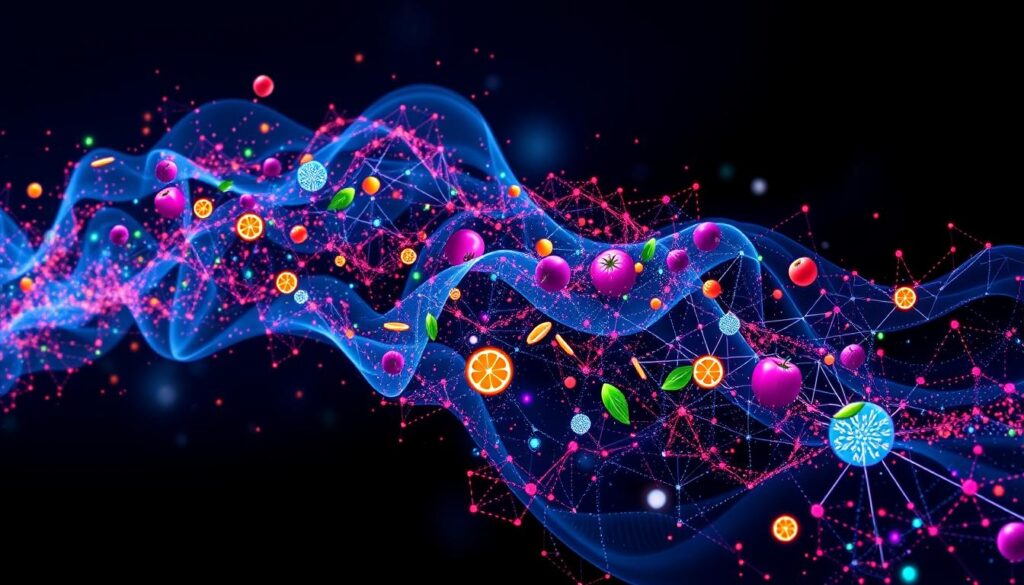Unraveling the Mystery of Our Meals: How Network Science and AI Are Changing Nutrition
Have you ever wondered if the secret to good health was hidden in your fridge? Well, hold onto your broccoli, because researchers are diving deep into the world of food molecules to uncover the secrets behind our diets! According to expert Albert-László Barabási, a distinguished professor of physics at Northeastern University and director of the Center for Complex Network Research, the world of nutrition is more complicated than a cooking show hosted by a squirrel.
What’s Cooking in the World of Nutrition?
Since the human genome was decoded back in 2003, Barabási has been using network science to map out the connections between proteins in our cells—kind of like a chef connecting the dots between ingredients in a recipe. He explains that this field of research, which he cleverly calls “network medicine,” aims to provide personalized dietary recommendations informed by an individual’s genetics, dietary habits, and the stage of their health journey. Because, let’s face it: who doesn’t want a personalized meal plan that specifies kale over cookies?
"Genes define proteins,” Barabási states, “and disease arises when a gene mutates." But hold your horses, folks! Genetic variations account for only a fraction of diseases—just a measly 30%. The rest, he says, can often be traced back to lifestyle choices, the environment, and the foods on our plates! “Food can be the biggest culprit,” he quips.
The Quest for "Dark Matter" in Our Diets
Around ten years ago, Barabási embarked on a mission to integrate diet into network medicine, realizing that many of the food molecules affecting our health are still largely uncharted territory—what he calls the “dark matter” of nutrition. In scientific terms, that’s a lot of necessary nutrients hiding in the shadows, much like a forgotten veggie in the back of the fridge.
A recent accomplishment in this journey is Barabási’s latest review article titled Decoding the Foodome: Molecular Networks Connecting Diet and Health, published in the Annual Review of Nutrition. This tasty tidbit of research shows how network science and AI can help us understand how food affects our health.
Now, might I ask: how does food get into our bloodstream? You guessed it! Some food molecules provide energy, while others have a nefarious role as they bind to cell proteins or DNA, influencing our biological processes faster than you can say "cheeseburger." And just like that, they can either speed things up or put the brakes on bodily functions.
The Ingredients of a Healthier Future
Barabási’s team uncovered that the U.S. Department of Agriculture had measured just 188 components for our food, primarily focusing on macronutrients like carbs and protein. But the team boldly discovered that many health-implicated food molecules were not part of the original cast list—shocking, right?
They started investigating tens of thousands of food compounds, proudly unveiling the "dark matter" of nutrition—a collection of more than 139,000 food molecules lovingly curated from reputed databases, scientific literature, and even previous experiments. It’s as if Barabási and his team were the detectives of the food world, cracking the code to uncover treasures hidden within our meals.
The Processed Food Predicament
Not all foods are created equal, and ultra-processed foods have garnered some serious side-eye in recent times. The relative concentrations of chemicals in natural foods are predictable, while ultra-processed options—think packaged bread and cookie dough—feature longer ingredient lists full of things we typically don’t have in our homes. If your snack has more ingredients than a novel, it might be time to reconsider it!
Barabási notes with concern that since the Industrial Revolution, food processing has evolved rapidly, but our biology? Not so much. This mismatch may contribute to rising health issues. “The problem most likely comes from the chemical changes that processing does to you,” he states.
A Flavorful Future Awaits
So, what’s the recipe for better health? Well, Barabási recommends eating foods that your great-grandmother would recognize—simple, whole ingredients that haven’t traveled farther than the grocery store. The secret is to steer clear of anything with a name longer than your average novel!
With the integration of AI and modern technology for a large-scale project to identify the chemical makeup of our foods, Barabási believes that scientists can map out 50% to 60% of the “dark matter” of nutrition within five years—covering a whopping 99% of what we consume. That sounds like food for thought, doesn’t it?
In conclusion, thanks to network science and AI, our meals might soon receive the makeovers they truly deserve. So next time you dig into your dinner, remember that behind every delicious bite is a complex web of connections—just waiting to be explored. Who knew saving your health could be so appetizing?
For more delightful discussions on food and health, check out Barabási’s incredible study in the Annual Review of Nutrition. Your body—and your taste buds—will thank you for it!
Follow us at Pasta From the Sea for more nutrition news!
